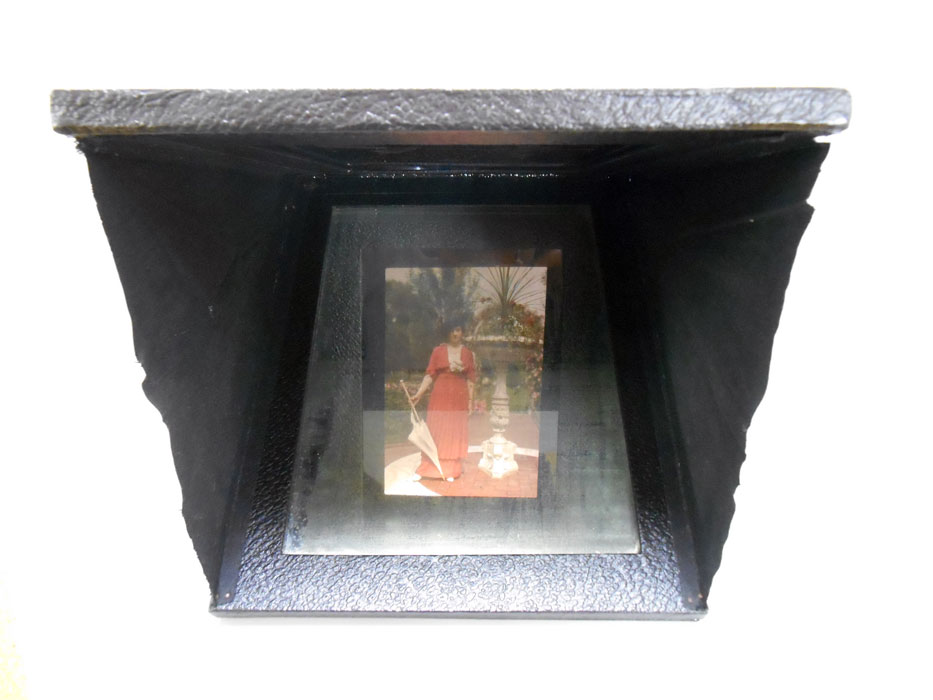Duke Libraries is digitizing our collection of four autochrome lumières from the Semans family papers and they recently came to conservation for pre-imaging review. Autochromes are an early color photographic process. Our autochromes depict Mary Duke Biddle and Sarah P. Duke and date to about 1910. The color in autochromes lumières is uniquely produced with a color filter layer comprised of fine potato starch grains that are dyed different hues (commonly green, orange-red, and blue-violet) and adhered to a glass plate with lamp black applied to fill the interstices. The undeveloped color filter layer, if viewed under magnification, resembles color pixels and is reminiscent of a pointillist painting.

The autochromes are viewed with transmitted light and are often housed in a hinged viewer called a diascope. The photographic plate, along with a ground glass diffuser, is attached to one cover of the diascope and a mirror in the other. Light passes through the diffuser and autochrome and the viewer sees the reflected image of the photograph in the mirror. The dyes used to produce autochromes are extremely light sensitive and we are taking great care not to expose our materials to excessive light during the digitization process.
Post contributed by Erin Hammeke, Senior Conservator for Special Collections, as part of our ongoing “In the Conservation Lab” series.


